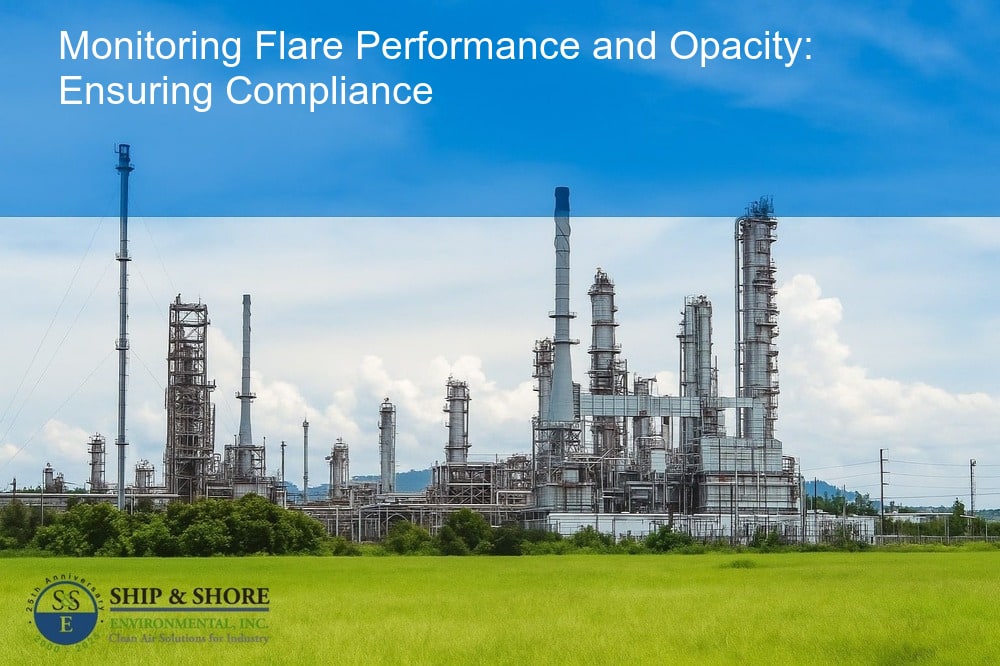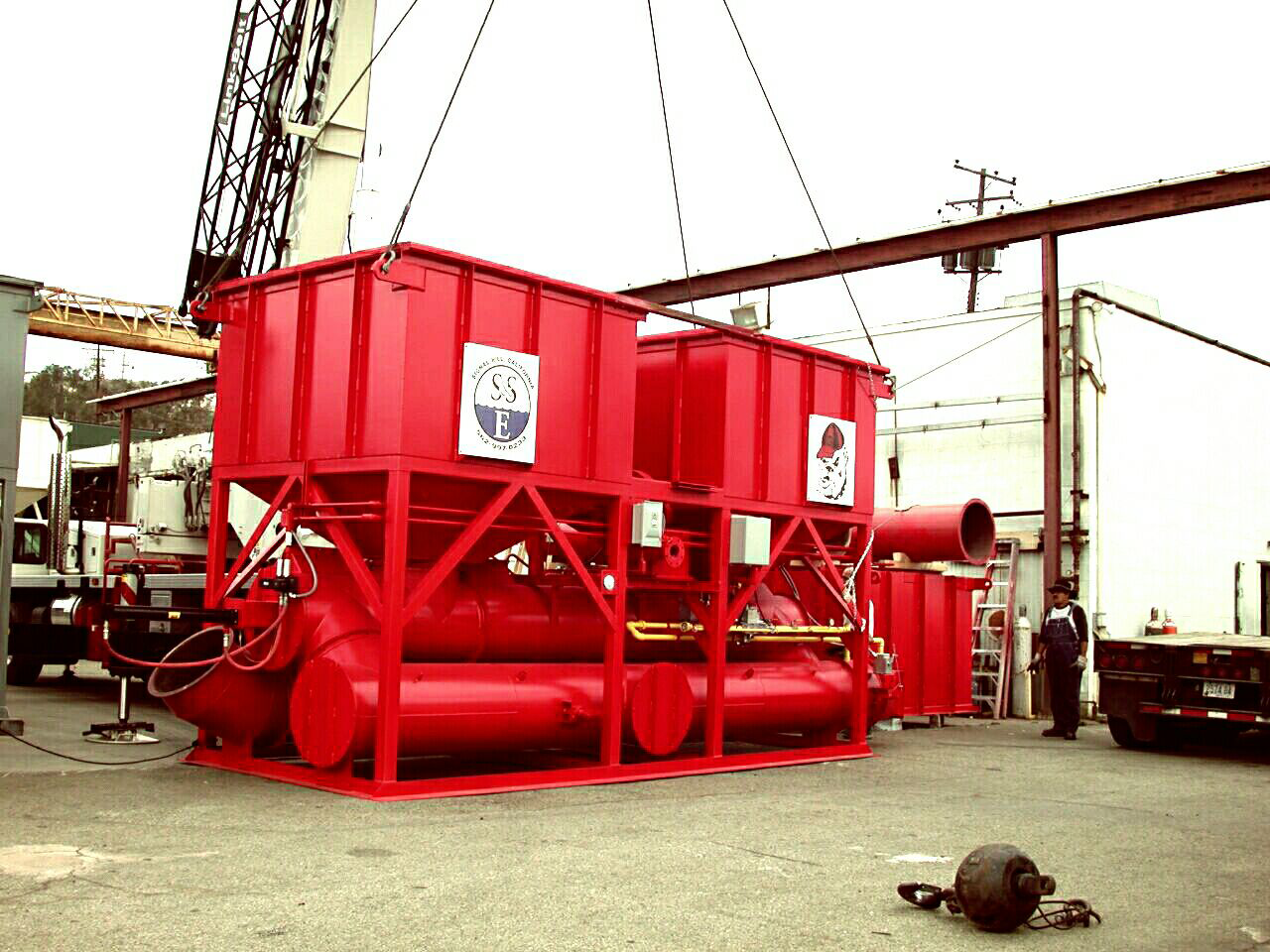
Optimizing Environmental Compliance: Monitoring Flare Performance and Opacity
September 12, 2025 6:02 amUnderstanding the Importance of Monitoring Flare Performance and Opacity
In today’s rapidly evolving industrial landscape, monitoring flare performance and opacity is paramount for ensuring compliance with stringent environmental regulations and advancing sustainable practices. At Ship & Shore Environmental, Inc., we recognize the critical role that effective flare management plays in mitigating the harmful impact of industrial emissions on both the environment and public health. As businesses and regulatory bodies alike prioritize environmental stewardship, understanding and improving flare performance and opacity monitoring has never been more essential.
Environmental Standards: The Role of Flare Management
Environmental standards have become increasingly rigorous over the past few decades, driven by growing awareness of climate change and the pressing need to reduce air pollution. Flares, which are often used to manage excess gases in industrial processes, can significantly impact air quality if not properly monitored and controlled. Efficient flare management is therefore a key component of any industry committed to reducing its environmental footprint. By adhering to established standards and continuously improving monitoring techniques, we can contribute to a cleaner and healthier world.
Transitioning to Cleaner Industrial Processes: The Need for Flare Performance Monitoring
The industrial sector is undergoing a transformative shift toward cleaner and more efficient processes. Innovations in technology and a heightened focus on sustainability are driving this transition, but these advancements come with their own set of challenges. One of the most critical aspects of this shift is the need for robust flare performance monitoring. By leveraging state-of-the-art technology and data analytics, we can ensure that flares operate efficiently and within regulatory limits, thereby minimizing their environmental impact.
Effective monitoring of flare performance and opacity is not just about compliance; it is about proactive environmental management. By maintaining optimal flare operation, industries can reduce greenhouse gas emissions and other pollutants, contributing to healthier communities and ecosystems. This proactive approach is integral to corporate social responsibility and aligns with global sustainability goals.
Key Factors Involved in Flare Performance and Opacity Monitoring
Several crucial factors determine the efficiency and effectiveness of flare performance and opacity monitoring. One primary element is the fuel composition being utilized in the flare system. The types and ratios of hydrocarbons present can significantly impact combustion efficiency, which directly influences both performance and opacity levels. Another critical factor is the flow rate of the waste gases being directed to the flare. Irregular flow rates and variable compound mixtures can lead to incomplete combustion, resulting in higher opacity and environmental non-compliance.
Temperature control, too, plays an essential role in monitoring flare performance and opacity. Maintaining optimal combustion temperatures ensures that the hydrocarbons are efficiently combusted, thereby reducing the generation of smoke and other pollutants. Moreover, air-to-fuel ratios must be carefully managed. A proper balance ensures complete combustion, minimizing both opacity and the release of hazardous emissions. Lastly, the proper functioning of supporting equipment, such as flame arresters and knock-out drums, is vital for overall system efficiency and compliance.
Advanced Techniques and Innovations in Monitoring Flare Performance and Opacity
We utilize advanced monitoring technologies to ensure optimal flare performance and opacity levels. One such technique involves the use of Infrared (IR) cameras equipped with filter technology, capable of detecting specific wavelengths emitted during combustion. These cameras can provide real-time data on flare efficiency and emission levels. Additionally, Optical Gas Imaging (OGI) systems enable the detection of hydrocarbons and other volatile organic compounds that are invisible to the naked eye, offering a comprehensive understanding of emissions.
Another significant innovation is the deployment of Continuous Emission Monitoring Systems (CEMS). These systems measure the concentrations of gas emissions in real time, providing continuous data for performance assessment. Moreover, Laser-Based Technologies such as Tunable Diode Laser Absorption Spectroscopy (TDLAS) offer high precision and accuracy in monitoring specific gas compounds. These advanced techniques not only enhance the accuracy of monitoring flare performance and opacity but also facilitate better regulatory compliance and proactive maintenance strategies.
- Infrared (IR) Cameras
- Optical Gas Imaging (OGI)
- Continuous Emission Monitoring Systems (CEMS)
- Laser-Based Technologies (TDLAS)
Case Studies: Effective and Inefficient Approaches to Flare Performance and Opacity Monitoring
Consider a case study where a petrochemical plant achieved substantial improvements in both efficiency and environmental compliance through the implementation of a comprehensive flare monitoring system. By integrating advanced CEMS and IR cameras, the plant was able to maintain optimal combustion conditions. This approach not only reduced opacity levels but also minimized regulatory penalties. The continuous data allowed for proactive system adjustments, ensuring sustained compliance and improved operational efficiency.
On the other hand, an inefficient approach involves relying heavily on manual inspections and intermittent monitoring. One refinery faced significant challenges with regulatory compliance due to erratic monitoring schedules and outdated equipment. Without real-time data, the facility often experienced periods of heightened emissions and increased opacity, resulting in numerous violations. This inadequate approach underscores the importance of adopting state-of-the-art technologies and continuous monitoring systems.
Did you know? Advanced optical spectrometry can now provide real-time data on flare performance, aiding in the reduction of harmful emissions and improving overall environmental impact.
Advances in monitoring technology have revolutionized the way industries manage and reduce emissions. Optical spectrometry, for example, allows for the analysis of flare combustion efficiency by measuring the light spectrum emitted from a flare. This technique helps industries to detect inefficiencies and take corrective measures in real-time, thus minimizing their environmental footprint and aligning with increasing regulatory standards. Furthermore, it provides crucial data that can drive improvements in operational practices and equipment design. As industries worldwide strive for sustainability, such technological innovations are critical in ensuring compliance and demonstrating corporate social responsibility.
The Future of Industrial Processes: Improvements in Flare Performance & Opacity Monitoring
As we look toward the future of industrial processes, it’s clear that advancements in monitoring flare performance and opacity will play a pivotal role. Cutting-edge technologies continue to emerge, providing us with more accurate, real-time data, and innovative solutions to reduce emissions and improve overall environmental impact. By integrating these advancements, we can transition to cleaner industrial processes, paving the way towards a more sustainable future.
The Challenges and Opportunities in Flare Monitoring
While we celebrate the progress made in monitoring flare performance and opacity, it’s important to recognize the challenges that remain. One significant hurdle is the need for consistent regulatory standards across different regions. As industries operate globally, uniform guidelines will help ensure that all facilities are held to the same high standards, ultimately benefiting the environment worldwide. Additionally, the financial costs associated with adopting state-of-the-art monitoring technologies can be a deterrent for some organizations. However, the long-term benefits of improved compliance, reduced emissions, and enhanced corporate social responsibility cannot be overstated.
On the bright side, these challenges also present ample opportunities. By investing in advanced monitoring systems, companies can not only enhance their environmental performance but also gain a competitive edge. The insights gained from real-time monitoring data allow for more informed decision-making, optimizing operational efficiency and reducing costs. There is also a growing market for expert consultancy services, helping industries navigate the complexities of compliance and technology integration.
How Monitoring Flare Performance and Opacity Contributes to Corporate Social Responsibility
At Ship & Shore Environmental, Inc., we understand the critical role that monitoring flare performance and opacity plays in demonstrating corporate social responsibility (CSR). By adhering to strict environmental standards and continuously improving our monitoring practices, we contribute to the global effort to combat climate change and protect our natural resources. Our commitment to innovation and excellence in flare management sets a benchmark for the industry, inspiring others to follow suit.
Moreover, transparent reporting and compliance with environmental regulations can strengthen relationships with stakeholders, including customers, investors, and regulatory bodies. As public awareness of environmental issues grows, businesses that prioritize sustainability are more likely to earn trust and loyalty. Our detailed case studies showcase how effective monitoring solutions have successfully enhanced environmental compliance and operational efficiency across various industries.
In conclusion, monitoring flare performance and opacity is not just an operational necessity but a cornerstone of responsible industrial practice. The journey toward cleaner, more efficient processes is a continuous one, requiring dedication, innovation, and collaboration. At Ship & Shore Environmental, Inc., we are committed to leading this charge, ensuring that our industries not only meet but exceed environmental standards, fostering a greener and more sustainable future for all.
FAQ
What is the importance of flare monitoring in industrial processes?
Flare monitoring is crucial because it helps industries minimize their environmental impact by tracking the efficiency and emissions of their flaring systems. By understanding how flares perform, companies can make informed decisions to optimize combustion efficiency, ensure regulatory compliance, and demonstrate their commitment to environmental sustainability and corporate social responsibility. Effective management of these systems also reflects a company’s dedication to health, safety, and the protection of the environment.
How does Ship & Shore Environmental, Inc. contribute to better flare monitoring practices?
At Ship & Shore Environmental, Inc., we are deeply committed to advancing flare management solutions by implementing the latest technologies and practices. Our approach includes utilizing real-time data for increased accuracy and developing innovative methods to reduce emissions. These advancements not only support environmental compliance but also provide operational benefits such as cost-efficiency and process optimization. As a result, we set industry benchmarks and inspire other organizations to elevate their environmental stewardship.
What are the challenges associated with adopting new flare monitoring technologies?
Adopting new technologies can be challenging, particularly with the financial investment required and the need for uniformity in regulatory standards across different regions. Despite these hurdles, the transition is a rewarding one. Our rigorous pursuit of excellence ensures that we not only meet the immediate challenges but also capitalize on the vast opportunities that advanced monitoring systems offer. This proactive stance not only positions us as environmental leaders but also aligns with our core values of innovation and responsibility.
What opportunities does Ship & Shore Environmental, Inc. see in the face of these challenges?
In light of the challenges, our team at Ship & Shore Environmental, Inc. sees a wealth of opportunities for growth and leadership. The investment in state-of-the-art systems provides a significant return through improved compliance, reduced emissions, and enhanced operational efficacies. Furthermore, with growing market demand for expertise in environmental management, we offer consultancy services, helping other companies achieve similar successes. Consequently, we turn potential obstacles into milestones towards a sustainable industrial future.
How does improving flare system monitoring benefit stakeholders and contribute to CSR efforts?
Improving the monitoring of industrial flare systems significantly benefits stakeholders by enhancing transparency and compliance with environmental regulations. Such efforts solidify stakeholder trust and exemplify strong corporate social responsibility (CSR) practices. Customers, investors, and regulatory bodies are increasingly valuing sustainability, and our commitment to reducing emissions and improving transparency not only bolsters our reputation but also supports the larger community’s effort against climate change. Through our case studies, we demonstrate how these practices lead to both ecological and economic gains.
Categorised in: Blog

